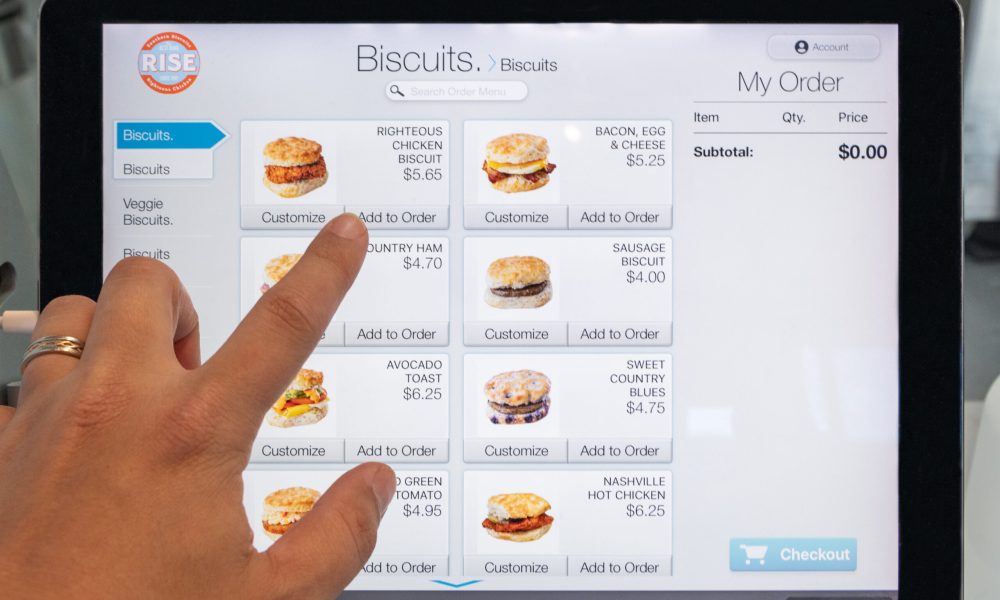The pandemic economy has taught restaurateurs (somewhat painfully) the art of the pivot. Many who weren’t equipped to deal with the abrupt and dramatic shifts in the industry last year had to scramble to adapt to new delivery and online ordering systems or face closure.
Although for many it was baptism by fire, lessons emerged that have instigated a new and critical business approach. As operators navigate the aftermath, a period of uncertainty remains due to the new COVID-19 variants and evolving cultural shifts in terms of how customers interact with retail and restaurants. But one thing is for sure — the industry has reached a point of no return when it comes to the technology strategies restaurants must embrace.
A key casualty of the pandemic for restaurants is the point of sale (POS) system as we have known it. No longer can restaurant owners rely on POS terminals alone to conduct transactional business. In fact, more than 70% of restaurant customer transactions are now conducted beyond the traditional face-to-face ordering experience.
Rapid technological growth and developments in drive thru, QR code payments, delivery, online ordering, and more have prompted a dramatic shift in consumer behavior. Consequently, it has become a business imperative for restaurants to more nimbly adapt to accommodate such market moves.
The pandemic has also precipitated an explosive growth in futuristic restaurant technologies such as voice-activated ordering and drone delivery. Consumers (especially the tech-fluent younger cohorts) are showing their willingness to quickly adapt to these new behaviors.
Because of this, the engine that powers these evolving capabilities has become critical. It is increasingly imperative that businesses have a cloud-based, transactional platform with an open API that can rapidly integrate new core and partner technologies as they are embraced by the market and consumers.
In the same way that market and consumer pressures have urgently forced a shift away from cash to cashless systems, restaurants must embrace the flexibility and fluidity that transactional platforms provide to help them face evolving market conditions or they risk being left behind.
The transactional platform
But rather than creating a new technology, the transactional platform is a natural evolution of the point of sale concept as we have known it. We refer to our approach and core technologies as the heart of our clients’ business. The metaphor is apt because, in effect, we provide the engine through which each part of the restaurant business flows. The heart pumps blood throughout the body of the enterprise, enabling core functionalities and important partner capabilities like inventory management, online ordering and delivery, kiosk management, employee management and payroll, CRM and customer loyalty programs, and much more.
For many merchants, this core transactional approach helped protect their business during the industry’s recent challenges. Rise Southern Biscuits & Righteous Chicken, a chain of 16 stores, had embraced a tech-forward business strategy pre-pandemic with self-serve kiosks they installed at multiple locations. While this waitstaff-free approach initially became popular with customers, when COVID-19 shifted customer preferences towards contactless ordering, these prominent self-service kiosks made it much easier to maintain a safe social distance at Rise locations.
Rise went a step further by introducing a fully-integrated kitchen display system which enabled automatic syncing of orders between the Revel platform and the KDS, significantly increasing efficiency in the kitchen. Rise also implemented an online ordering solution and added a customer loyalty and digital gift card program which connected easily with its POS providing a rich and seamless business management experience. Just four weeks after the effects of COVID-19 became clear, sales at Rise locations had recovered to pre-pandemic numbers and then continued to increase to over 25% overall with profit in some stores reaching over 300%, thanks in part to their adoption of these contact-free and off-premise solutions.
This core transactional platform should not only be ready to connect with a broad network of established partner offerings but for enterprising merchants and restaurants who want to connect their own bespoke software, an open API can offer critical flexibility when needed.
Restaurateurs want to know how they can future-proof their business against the unpredictable nature of the hospitality market and, while of course no one can predict the future, it’s important to keep an eye on consumer trends and market forces.
The term “point of sale” will become largely defunct in the next 5 to 10 years. In its place, merchants will and must more commonly rely on a core transactional platform to successfully conduct their business — an engine that will drive the market forward by providing business management capabilities and seamlessly connecting exciting and innovative partner technologies.
